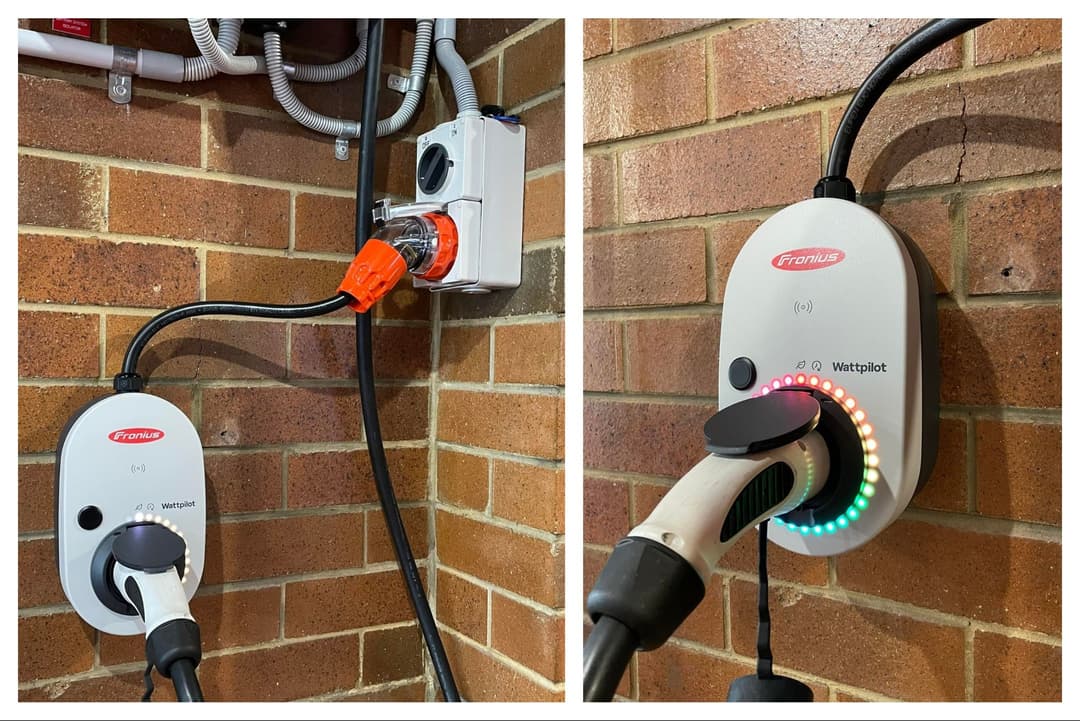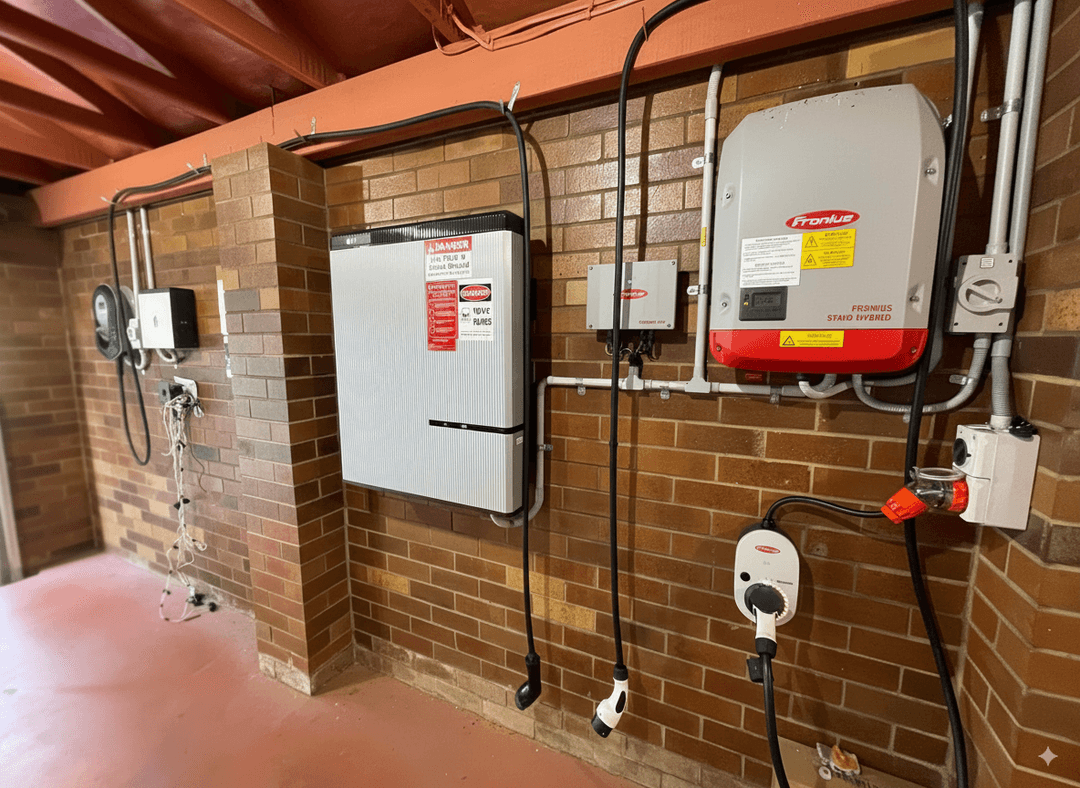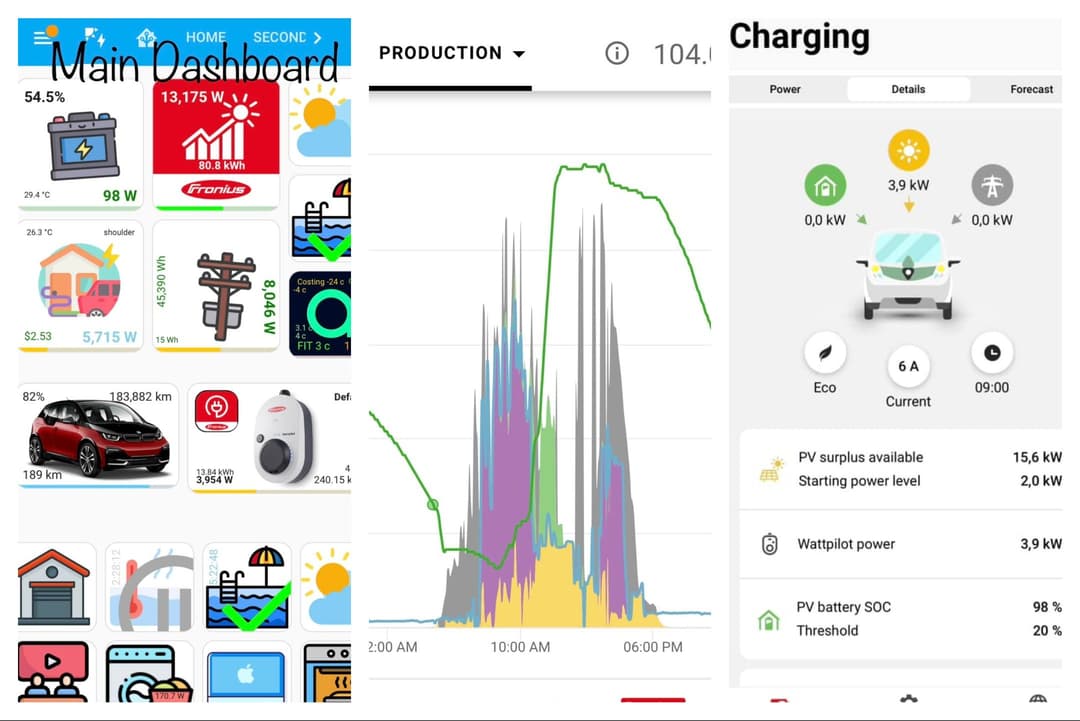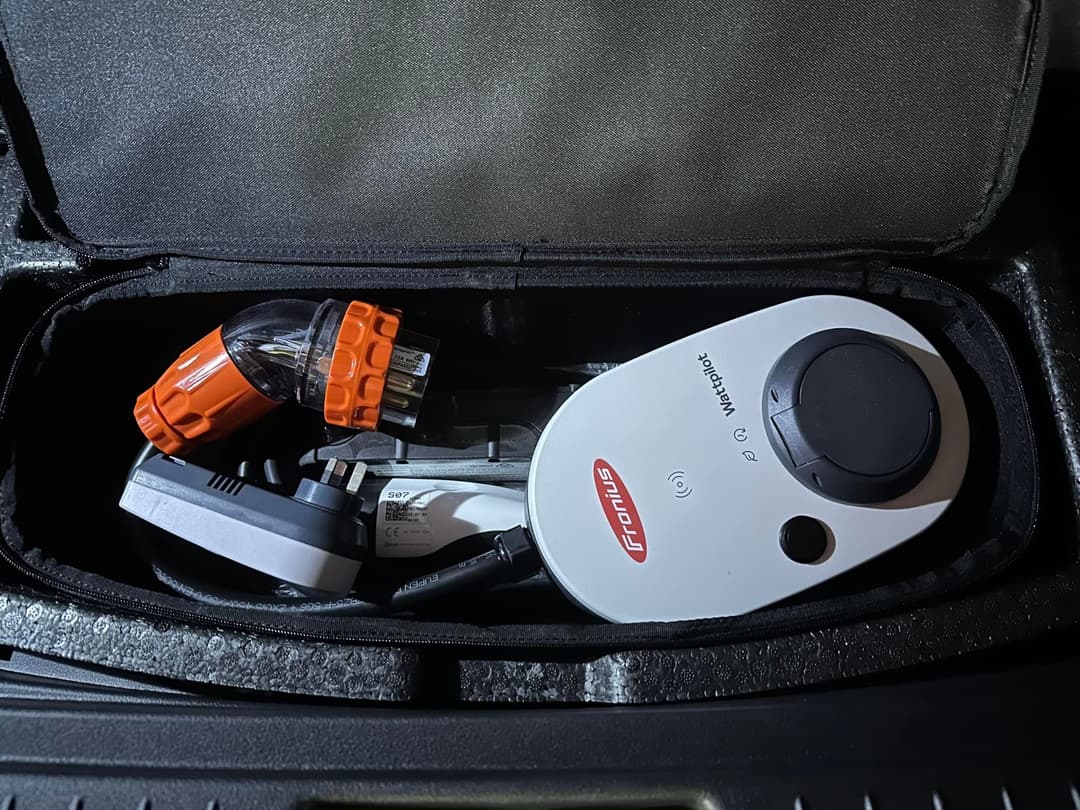
zecar rating
Good points
- Portable 22kW charger with solar-aware intelligence
- Seamless integration for Fronius inverter owners
- Excellent offline performance (still works without internet)
Could be better
- App localisation could be improved for Australia
- Non-Fronius setup requires cost for smart features
- Expensive unless you need the solar aware features
Over the last seven months, I’ve been testing the Fronius Wattpilot Go, putting more than 3.3MWh of solar energy through it in real-world Australian conditions. Having previously owned and tested the Zappi (both versions) and the Smappee EV Wall, I wanted to see whether Fronius, already a trusted name in solar inverters, could bring the same reliability and intelligence to EV charging.
The Wattpilot Go is designed to be a portable, three-phase, 22kW smart charger that integrates directly with solar production. After months of use, it’s proven to be one of the most capable and reliable EVSEs I’ve tested.
Design and Build Quality
The Wattpilot Go strikes a balance between portability and robustness. It’s not the smallest EV charger available, but for a 22kW solar-aware unit, it’s impressively compact. The design is minimalist: one button and a ring of 32 LEDs provide feedback on charging status and settings. While this keeps the hardware simple, most adjustments are handled through the app.
Build quality is solid, with a durable enclosure that feels designed for years of use in Australian conditions. Security is also well considered. The Type 2 socket can be set to lock in different modes, preventing cable theft, and the charger includes RFID authentication. Up to 10 RFID tags can be registered, including third-party cards like ChargeFox or EVie, which is particularly useful for households, businesses, or anyone wanting to track individual usage.
Installation and Setup
For Fronius inverter owners, installation is refreshingly straightforward. The Wattpilot Go simply plugs into a 32A 5-pin socket, and thanks to its integration with the Fronius Smart Meter via the Datamanager, there’s no need for CT clamps or extra wiring. This makes setup cheaper and faster compared to most solar-aware chargers.
The Home version of the Wattpilot is a hardwired alternative, but the Go’s portability means it can easily be relocated, making it ideal for renters, frequent movers, or those who want charging options at multiple sites.
Once connected, the charger pairs quickly with the Solar.Wattpilot app, which provides full configuration and live monitoring.
Compatibility and Solar Integration

The Wattpilot Go is clearly optimised for Fronius solar systems, where it integrates seamlessly with Solar.Web for combined monitoring of production, consumption, and EV charging. In this setup, it delivers one of the smoothest solar-aware charging experiences available.
That said, non-Fronius users are not left out. By adding a Datamanager and Smart Meter, you can unlock most of the same functionality, albeit with extra cost. Alternatively, pairing the Wattpilot with Home Assistant opens up an even deeper level of control. With this integration, you can automate charging based on solar forecasts, state of charge, or even wholesale electricity prices, making it more flexible than competitors like Zappi or Smappee.
The Wattpilot is also OCPP 1.6J compliant, meaning it can connect to future EV charging networks or demand response programs as they roll out in Australia.
▶️MORE: Exploring the Benefits of Smart EV Charging

Charging Modes and Daily Use
In daily operation, the Wattpilot offers three main charging modes:
- Fast mode delivers maximum power as quickly as your car and supply allow.
- Next Trip mode lets you set how much energy you’ll need and by what time, ensuring your car is ready for scheduled departures.
- ECO mode is where the Wattpilot shines, dynamically adjusting charge rate to match excess solar production.
ECO mode includes advanced settings such as starting thresholds, single-to-three-phase switching, and integration with other Fronius products like hot water diverters or batteries. It’s one of the most sophisticated implementations of solar-aware charging I’ve come across.
The charger can vary output from 1.4kW to 22kW, depending on your EV and power supply, making it suitable for everything from slow overnight top-ups to rapid three-phase charging.
Reliability and Performance
In my testing, the Wattpilot has proven extremely reliable. Even during the peak of a Queensland summer, it managed heat well. On single-phase, I only observed minor throttling of around six percent, far better than what I experienced with the Zappi.
Another standout strength is how well the Wattpilot functions offline. Even without internet, both the app and ECO solar-aware features continue working. The only drawback is that Solar.Web historical data won’t capture offline periods, but charging itself remains unaffected. This gives the Wattpilot an edge in reliability over cloud-dependent competitors.
Value for Money
The WattPilot Go retails for $1,750. In terms of value, the Wattpilot Go makes a strong case if you are seeking its smart features. For Fronius owners, the simple installation process avoids the extra costs of CT clamps and complex wiring that other smart chargers often require. Its portable design adds further value by making it suitable for renters or those likely to move.
When compared with competitors like the Zappi or Smappee, the Wattpilot stands out for its advanced solar integration, strong offline performance, and exceptional Home Assistant compatibility. The inclusion of OCPP ensures it won’t become obsolete as EV charging standards evolve.
The main trade-offs are that the app could be better localised for Australian users, and ECO mode could respond a little faster to sudden solar fluctuations. But these are minor points against an otherwise very well-rounded product.

Final Verdict
After seven months of continuous use, the Fronius Wattpilot Go has proven itself to be one of the most capable EV chargers currently available in Australia. It combines portability, robust solar integration, and reliable offline performance in a package that is both user-friendly and highly adaptable.
For households with a Fronius solar system, it’s almost a no-brainer. The installation is simple, the integration seamless, and the functionality excellent. Even for those without Fronius hardware, it remains a strong contender thanks to its Home Assistant capabilities and OCPP support.
Overall, the Wattpilot Go is a top-tier choice for anyone serious about solar-aware EV charging.
About the author
Chris Cathcart
Christopher Cathcart is an EV Enthusiast bringing 7 years of hands-on experience with solar, batteries, EVs, and home energy management. He’s achieved over 6 years of energy bill credits and driven nearly 300,000 kilometres petrol-free. Passionate about sharing his knowledge, Christopher currently works for Mates in Solar undertaking system design and customer support.
Stay up to date with the latest EV news
- Get the latest news and update
- New EV model releases
- Get money savings-deal
